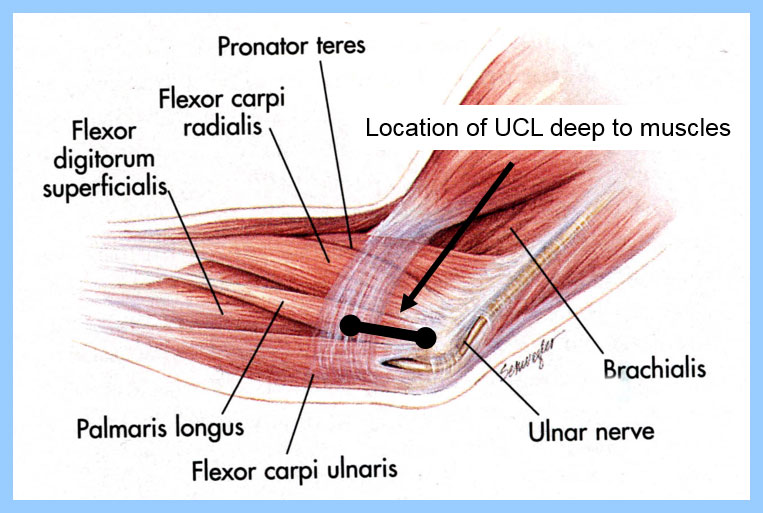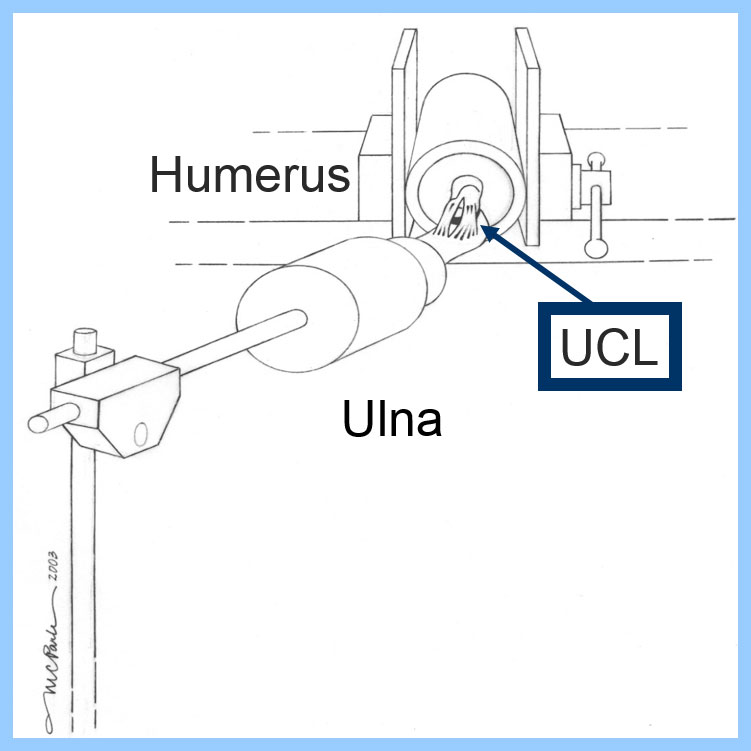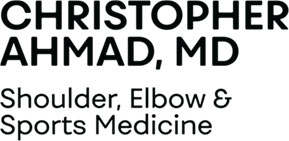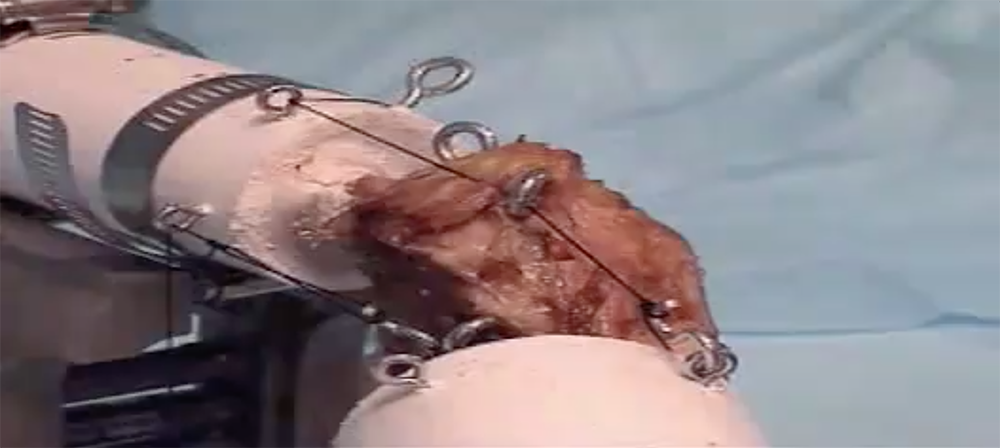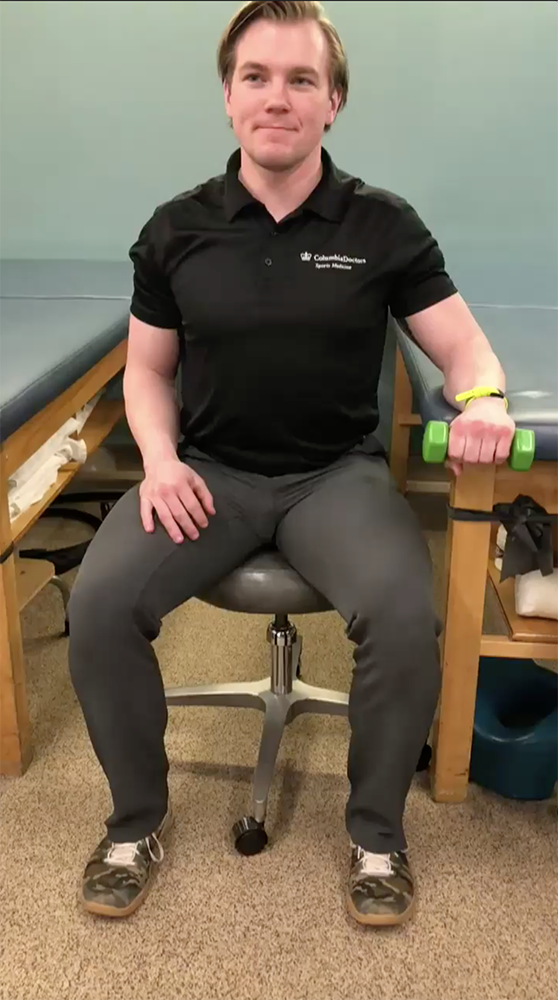When it comes to the answer, it depends who you ask. From a surgeon who repairs torn UCLs and researches UCL injury prevention strategies,the most important muscle resides in the forearm.
Understanding the pressure of throwing on a UCL
The muscles of the forearm shield the the UCL from high velocity during the act of pitching. As the pitcher accelerates the five-ounce baseball, the force on the UCL can approach 60 pounds! This is similar to five bowling balls hanging from your wrist while in the cocked position of throwing. In this position, the forearm essentially wants to detach from the body, which was how Tommy John described his UCL injury. The UCL is a 2-inch ligament in that holds two elbow bones together, like a rope. But a ligament is different than a muscle, and can’t be significantly strengthened through exercise the same way muscles can. As a result, a professional pitcher’s ligament is pretty much the same as a soccer player’s, or a surgeon’s, and there is little anyone can do to make it stronger.
Pressure testing a UCL
While attending Columbia University, I studied mechanical engineering at the School of Engineering and Applied Science. My course work included engineering labs where we pulled various plastic or metal objects apart to understand their strength and breaking characteristics. Years later as an elbow surgeon, I was fascinated with the strength of the UCL. I tested cadaver UCLs in the lab using the methods I learned in college and was stunned to discover that the ligament breaks at 32 newton meters. This is shocking because throwing a baseball imposes a force of 50 newton meters on the UCL–greater than the strength of the UCL. This suggests that the UCL should tear with every pitch.
Why then does the ligament not break with each pitch? One hypothesis is that the muscles of the forearm and elbow, which are positioned along side and on top of the UCL, provide protection to the ligament. We created an experiment that simulated forearm muscle activity and were able to prove our hypothesis that the muscles of the elbow have a huge impact on shielding the UCL from the devastating force of throwing. The importance of this discovery has been published in the Journal of Bone and Joint Surgery, and it shows that forearm muscles can be modified and strengthened much more effectively than ligaments.
More research and more to learn
Athletic trainers, physical therapists, and others involved in baseball health can now emphasize forearm muscle development and health in baseball players. In addition, forearm muscle fatigue can occur in a game or during a season, and the protection of the UCL will ultimately decrease. Finally, some pitchers experience forearm muscle strains which can lead to an increased risk of UCL injury. In fact, forearm muscle strain incidence and its association with UCL injury is another area I have spent time researching. If you’re curious (and who wouldn’t be?), you can learn more here.
